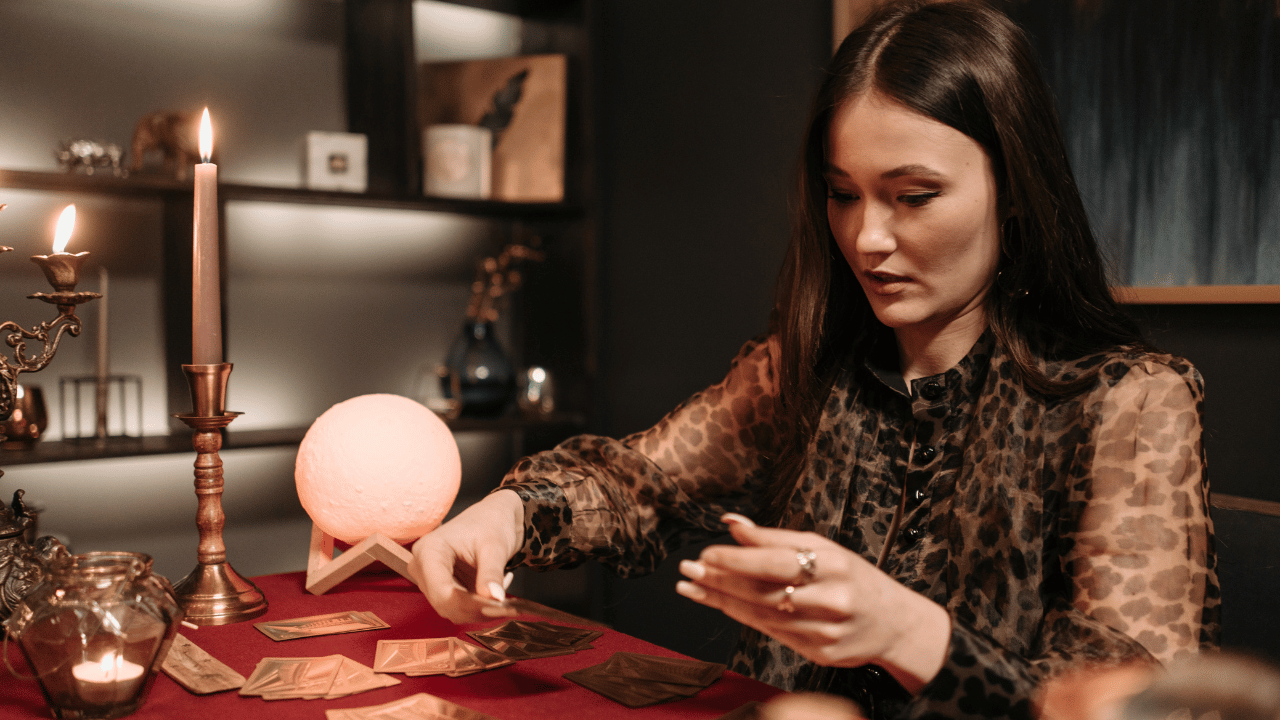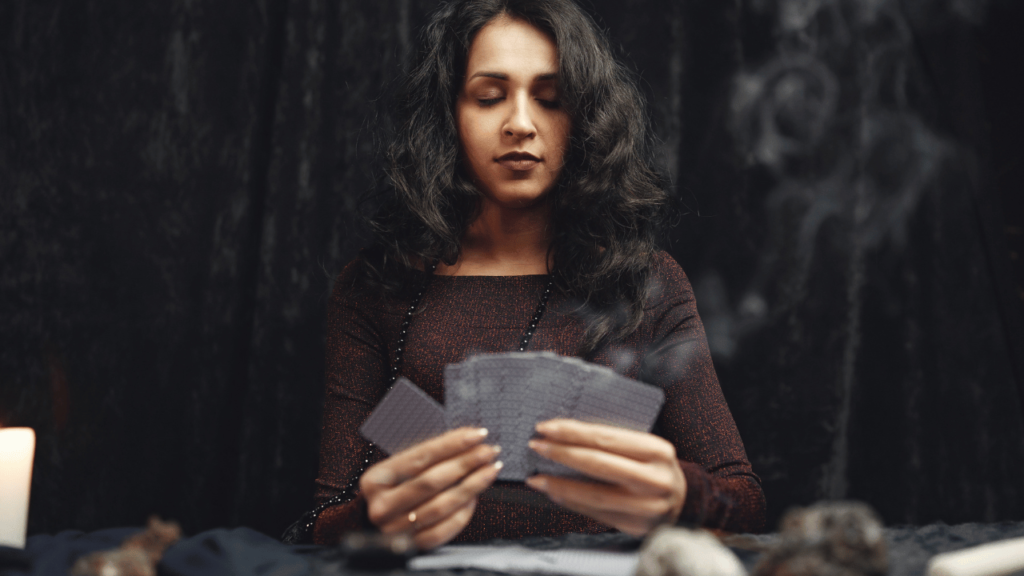What Does Intuition Feel Like? Signs and Feelings Explained

What Does Intuition Feel Like? Many describe intuition as an inner compass—a quiet yet powerful guide beyond logic. Unlike rational thought, it often appears as sudden physical or emotional signals, like goosebumps or a gut reaction. Rhonda, founder of Fearless Living, named her brand after a moment of clarity that struck her mid-stride, proving that deep knowing doesn’t always need analysis.
Your body often speaks first. A sinking stomach, heightened alertness, or even warmth can signal intuitive nudges. Psychologists and spiritual teachers alike view this as a bridge between unconscious wisdom and conscious choice. It’s less about fear’s tension and more about calm certainty.
Recognizing these signs—like recurring dreams or visceral boundary alerts—helps distinguish intuition from noise. Trusting that inner voice can steer decisions toward alignment, just as it did for Rhonda.
Key Takeaways
- What Does Intuition Feel Like? Intuition often manifests as physical sensations like goosebumps or stomach reactions.
- It differs from fear, offering calm clarity instead of tension.
- Recurring thoughts or dreams may signal intuitive guidance.
- The gut, with its 100 million neurons, acts as a “second brain.”
- Trusting intuition can lead to aligned, fearless decisions.
Understanding Intuition: Your Inner Compass
Your gut instinct isn’t just folklore—it’s a blend of science and spirituality. Some call it an internal GPS, while others see it as a whisper from the universe. Whether you lean toward psychology or mysticism, that inner nudge plays a vital role in decision-making.
Defining Intuition Across Perspectives
Psychologists describe intuition as the unconscious brain processing information faster than logic. It’s like your mind connecting dots behind the scenes. Spiritual traditions, however, frame it as divine guidance—a “God whispering” moment.
Take Stephanie, who instantly knew a job wasn’t right despite a perfect resume match. This claircognizance—sudden knowing—shows how intuition bypasses analysis. Her story mirrors research on the gut-brain connection, where 100 million neurons in your digestive system act as a second brain.
How Intuition Differs from Logic
Rational thought thrives on data, but intuition operates differently. Rhonda hesitated when buying a car, even though the numbers made sense. Her gut screamed walk away—and she later found hidden defects.
- Analytical thinking: Slow, deliberate, and detail-oriented.
- Intuitive nudges: Fast, instinctive, and often physical.
Angela Lovell’s Spock-versus-Kirk analogy fits perfectly. Logic (Spock) overthinks, while intuition (Kirk) trusts calm certainty. Your system of knowing blends both—but learning to heed quiet clarity changes everything.
What Does Intuition Feel Like The Physical and Emotional Signs

Your body sends clear signals when intuition speaks—learn to recognize them. These cues range from subtle chills to a gut feeling so strong it’s impossible to ignore. Unlike overthinking, intuitive messages arrive swiftly, often with physical or emotional weight.
Common Bodily Reactions Linked to Intuition
A racing pulse, goosebumps, or a queasy stomach often signal intuitive nudges. For Rhonda, a sudden chill warned her to avoid a “perfect” job offer—later revealed as toxic. These reactions stem from your body’s 100-million-neuron “second brain” in the gut.
Compare anxiety’s jitteriness to intuition’s calm. Fear clouds judgment, but intuitive clarity feels like a quiet certainty. Stephanie ignored a dating app match despite his charm—her sense of unease proved right when he ghosted her.
The “Just Knowing” Sensation
Claircognizance—instant knowledge—bypasses logic. Picture Rhonda tossing her famous pasta sauce mid-dinner, just knowing it was spoiled (it was). Detachment heightens these signals. When your mind quiets, intuition speaks loudest.
- Physical signs: Chills, sweating palms, or a sinking stomach.
- Emotional clarity: A calm “aha” versus anxiety’s chaos.
- Trusting it: Detach from outcomes to hear your inner guide.
Types of Intuition How It Manifests

Not all intuitive messages arrive the same way—some whisper, others shout. Angela Lovell’s research highlights four primary channels your inner guide uses: visions, body signals, instant knowing, and inner voices. Recognizing these can sharpen your ability to decode life’s subtle nudges.
Clairvoyance: Seeing Snapshots
Clairvoyance translates to “clear seeing.” It’s those flashes of future events or symbols—like imagining a bridge collapse before hiking. One psychic noticed flickering lights as her grandmother’s message. Journaling recurring images or using tarot cards can strengthen this skill.
Clairsentience: Gut Reactions and Body Signals
Ever felt a stomach drop after a conversation? That’s clairsentience. Stephanie’s “off” feeling post-chat revealed hidden deceit. Physical cues—goosebumps, sudden chills—signal this type. Yoga and feeling journals help tune into these bodily whispers.
Claircognizance: Instant Knowledge
Rhonda’s “Fearless Living” brand name struck her mid-walk—no analysis needed. Claircognizance delivers information like a download. Automatic writing (scribbling unfiltered thoughts) can unlock this rapid insight.
Clairaudience: Hearing Inner Messages
An inner voice insisting, “Buy extra pasta sauce,” saved Rhonda from a last-minute grocery run. Clairaudience sounds like guidance or even music. Meditation sharpens this experience of hearing beyond logic.
“Most psychics blend multiple intuition types—it’s not exclusive. You can develop any with practice.”
- Mix and match: You might “see” solutions (clairvoyance) but also “feel” risks (clairsentience).
- Start small: Track hunches in a journal to identify your dominant type.
- Trust growth: Even subtle signals count as intuition’s language.
Intuition vs. Fear How to Tell the Difference

Fear and intuition might seem similar, but their physical and emotional signatures differ vastly. One clouds judgment with dread, while the other offers calm guidance. Learning to distinguish them can transform your decision-making.
Fear’s Cloudy, Circular Nature
Fear feels like a fog—heavy and looping. Rhonda’s promotion request triggered sweating palms and what-if spirals. Unlike intuition’s clarity, fear obsesses over the future, like Lovell’s metaphor of anxiety as a wildfire spreading uncontrollably.
Physical signs reveal the difference. Anxiety brings a roiling stomach or tight chest. Intuition? Lightness, like Rhonda’s chills before avoiding a toxic job. Quiet the mind to spot these cues.
Intuition’s Clarity and Specificity
Intuition speaks in sharp, actionable nudges. Rhonda knew to skip a dimly lit alley but felt excited about a crowded party—same gut, different signals. Morning clarity often holds intuitive downloads, untouched by daily noise.
- Fear: Vague dread, resistance to growth, physical discomfort.
- Intuition: Calm certainty, alignment with purpose, subtle chills or warmth.
- Test it: Ask, “Does this feel expansive or contracting?” Your body won’t lie.
“Fear shouts; intuition whispers. Train yourself to listen to the quieter voice.”
Noticing recurring dreams of clear rivers versus muddy floods can mirror this contrast. Trust the difference—it’s your inner GPS cutting through static.
When Your Gut Feeling Screams Boundary Crossed

Boundary violations trigger instinctive alarms—your gut feeling won’t stay silent. Rhonda’s hands shook when her boss mocked her ideas, a physical reaction to disrespect. Your body reacts viscerally before logic steps in, like nausea or a racing heart.
In high-pressure situations, clairsentience—clear feeling—often kicks in. Stephanie’s chest tightened when her date pressured her, a red flag she later linked to his dishonesty. These signals demand attention, not dismissal.
When people disregard limits, follow up with clarity. Rhonda rehearsed scripts like, “This isn’t negotiable,” after her mom ignored her privacy. Detachment helps too: Pause to ask, “Is this fear or a real boundary violation?”
- Physical warnings: Sweating, chills, or stomach knots signal crossed lines.
- Emotions like anger or dread often mask deeper intuitive hits.
- Act fast: Name the breach and state consequences calmly.
“Your body’s reactions are data. Treat them like a trusted advisor, not noise.”
For more tools, explore Fearless Living’s guide. Your gut’s GPS knows the route—trust its detours.
That Off Feeling After a Conversation

Ever walked away from a chat with a nagging sense something wasn’t right? Stephanie felt it after shaking hands with a car salesman—his smile too wide, his pitch too slick. Her body reacted first: a clenched jaw and sweaty palms. Later, she discovered hidden fees he’d omitted.
Post-talk dissonance often signals mismatched information. Rhonda sensed her aunt’s fatigue before a cancer diagnosis, though her words were cheerful. Your unconscious spots patterns—micro-expressions, tone shifts—faster than logic can process.
Journaling helps unpack lingering discomfort. Try these prompts:
- Physical cues: Note any chills, tension, or energy drops.
- Others’ behavior: Did their words align with their body language?
- Thoughts post-chat: Did clarity come hours later?
Balance hunches with facts. Rhonda’s off feeling about a colleague led her to verify project details—exposing missed deadlines. Trust, but verify. Your gut flags the situation; logic investigates.
“Discomfort is data. Treat it like a weather alert—check the radar before stepping out.”
Next time a conversation leaves you uneasy, pause. Your inner compass might be recalibrating your path.
Joy as a Guide: When Intuition Sparks Happiness
Joy isn’t just happiness—it’s your inner compass pointing toward alignment. Rhonda’s spontaneous park strolls and puddle-jumping sessions weren’t frivolous; they were signals of her truest path. Like clairvoyance’s positive snapshots, these moments light up your emotional GPS.
Healthy elation differs from artificial highs. Nature walks or creative flow states create lasting clarity, unlike fleeting dopamine spikes. Stephanie ignored a promotion to launch a pottery studio—her hands tingled at the wheel, a physical confirmation logic couldn’t explain.
Playful experimentation unlocks intuition. Dance to head music. Sketch absurd ideas. As Josie discovered when she left nursing for aerial arts, joy often whispers before it shouts. Her story mirrors living a life you love—prioritizing passion over safety.
- Creative flow: Time vanishes when joy and intuition merge.
- Body cues: Warmth or energy surges signal alignment.
- Contrast test: Pure joy expands; fleeting highs contract.
“Joy is intuition’s neon sign—blinking brightest when you’re on course.”
Notice repeating patterns. Rhonda’s best decisions followed laughter-filled mornings. Your world reflects inner truth—let joy guide the way.
Listening to Your Gut in Uncomfortable Situations
Uncomfortable moments often trigger a deep, instinctive reaction—your gut knows before you do. Rhonda’s hands clenched when her boss pressured her to fudge financial reports. Her body’s contraction wasn’t fear—it was a clear decision-maker screaming walk away.
High-pressure situations amplify these signals. Sweating palms or a sinking stomach often mean others are crossing lines. Like Rhonda’s “three raised hands” moment—when peers cheered an unethical plan, her nausea flagged danger logic hadn’t caught.
Growth vs. Violation: Decoding Discomfort
Not all discomfort is bad. Butterflies before a speech? Growth. Chest tightness when a person demands compliance? Violation. Track physical cues:
- Growth discomfort: Feels expansive (e.g., excitement before a challenge).
- Violation warning: Contracts (e.g., stomach knots or sudden fatigue).
“Your body’s tension is a boundary alarm. Heed it before logic talks you out.”
Trusting it could save a critical decision. Stephanie ignored her gut at a networking event—later learning the charming recruiter was a scam. Your gut spots patterns before your brain connects dots.
Recurring Dreams and Desires: Intuition’s Nudge
Persistent fantasies aren’t random—they’re intuition’s way of nudging you toward alignment. Rhonda’s “soul-intended life” philosophy emerged from years of daydreaming about fearless living. Like Stephanie, who just knew writing was her path despite a stable finance job, these thoughts are claircognizance in action.
Angela Lovell calls these whispers your “highest callings.” That idea of moving cities or starting a bakery? It’s not frivolous. Over time, ignoring such themes risks burnout—like Rhonda’s client who dismissed her art passion until chronic fatigue hit.
Small steps matter. Journal recurring dreams. Sketch that business plan. As Lovell notes:
“Your soul speaks in loops. What repeats isn’t noise—it’s a roadmap.”
- Test the waters: Take a weekend class or shadow someone in your dream field.
- Track patterns: Note when certain thoughts resurface (e.g., during showers or walks).
- Trust momentum: Stephanie’s first blog post led to a book deal within two years.
Your inner guide won’t shout. But it will knock—repeatedly—until you answer.
How to Strengthen Your Intuition
Sharpening your inner guidance system takes practice, but the payoff is clarity. Like a muscle, your ability to discern subtle signals grows with consistent effort. Start small—trusting a hunch about which coffee shop to visit counts.
Practicing Detachment from Outcomes
Angela Lovell’s Star Trek analogy fits here: Be Spock-like. Neutrality quiets mental noise, letting intuitive hits surface. Before decisions, ask, *What if I didn’t need a specific result?* This practice reduces bias.
Journal recurring hunches. Note when your body reacts—like Stephanie’s stomach drop before a canceled flight. Over time, patterns emerge. Meditation helps too. Even 10 minutes daily enhances your ability to differentiate fear from guidance.
Morning Clarity and Physical Sensations
Dawn often brings undistracted insight. Set intentions before sleep: *Show me signs about X.* Upon waking, jot down dreams or gut feelings. Rhonda’s best moments of clarity came during sunrise walks.
- Map bodily cues: Warmth = alignment; chills = warning.
- Use tools: Automatic writing or nature walks amplify signals.
- Test gently: Follow a hunch daily—like taking a new route home.
“Intuition is a skill, not magic. The more you honor it, the louder it speaks.”
Conclusion: Trusting Your Inner Voice
What Does Intuition Feel Like? Trusting that quiet inner voice can transform the way you navigate life’s twists. Goosebumps or a sudden sense of clarity aren’t accidents—they’re your body signaling alignment.
Like any muscle, your inner guide strengthens with use. Stephanie ignored logic for a gut feeling—now thriving in her marriage. Rhonda’s peace of mind? Proof that small trust leaps add up.
Ready to begin? Explore Fearless Living’s tools. Tomorrow, pause before deciding—what’s your gut saying?












